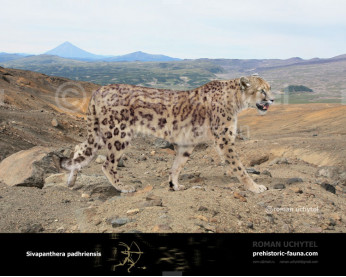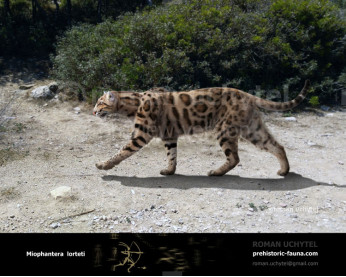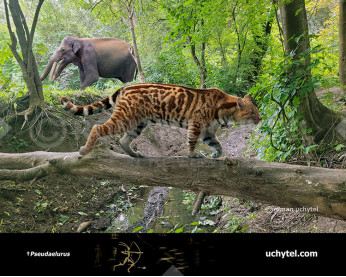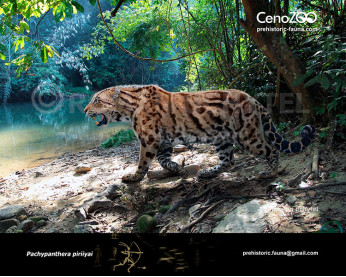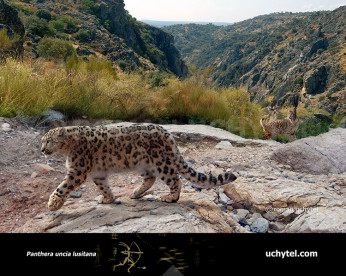Palaeopanthera blytheae
310310Palaeopanthera blytheae, Panthera blytheae (†Palaeopanthera blytheae (Tseng et al., 2014))
Order: Carnivora
Family: Felidae
Genus: Panthera
Dimensions: length - 1,5 m, height - 60 сm, weight - 15-45 kg
Temporal range: during the miocene (Asia, 4.1-5.95 million years ago)
Palaeopanthera blytheae is an extinct species of the big cat genus that is believed to have existed approximately 4.1-5.95 million years ago, during the late Messinian to early Zanclean ages. It is currently the oldest known species in the early Panthera genus. The first fossil of Palaeopanthera blytheae was in 2010 by Jack Tseng et al. of the American Museum of Natural History, in the Zanda Basin, located in the Tibetan Plateau.
Currently, only a fossil of a Palaeopanthera blytheae cranium has been found. However, current evidence shows that the species has a number of features common in other Panthera species, including a "frontoparietal suture located at the postorbital constriction", and an "absence of an anterior bulge overhanging the infraorbital canal".
Its size is believed to be on par with that of the clouded leopard, and is about 10% smaller than the snow leopard. However, this is purely based on the relative sizes of the cranium, so this may be slightly inaccurate.
The closest extant relative of Palaeopanthera blytheae is the snow leopard. The evidence for this is that the Panthera blytheae is more similar to the cranial structure of the snow leopard than other pantherines, as well as similar ranges that span the Tibetan Plateau. Based on the age of the fossil, Palaeopanthera blytheae is believed to have a very similar diet to the snow leopard, as many species that constitute a large part of the snow leopard's diet existed before the extinction of Palaeopanthera blytheae.
Panthera blytheae is not believed to be as closely related to the other extant species of the Panthera genus, and is therefore not believed to be the common ancestor of all pantherines. This implies that the divergence of the Panthera genus from the rest of Felidae was much earlier, with current estimates being approximately 16.4 million years ago. Analysis of the location of Palaeopanthera blytheae, as well as that of other Panthera species, indicates that the Panthera genus diverged from Felidae in Central/Northern Asia or the Holarctic region of Asia, with other pantherines migrating to Europe, Africa and the Americas.
Palaeopanthera blytheae, Panthera blytheae (†Palaeopanthera blytheae (Tseng et al., 2014))
Order: Carnivora
Family: Felidae
Genus: Panthera
Dimensions: length - 1,5 m, height - 60 сm, weight - 15-45 kg
Temporal range: during the miocene (Asia, 4.1-5.95 million years ago)
Palaeopanthera blytheae is an extinct species of the big cat genus that is believed to have existed approximately 4.1-5.95 million years ago, during the late Messinian to early Zanclean ages. It is currently the oldest known species in the early Panthera genus. The first fossil of Palaeopanthera blytheae was in 2010 by Jack Tseng et al. of the American Museum of Natural History, in the Zanda Basin, located in the Tibetan Plateau.
Currently, only a fossil of a Palaeopanthera blytheae cranium has been found. However, current evidence shows that the species has a number of features common in other Panthera species, including a "frontoparietal suture located at the postorbital constriction", and an "absence of an anterior bulge overhanging the infraorbital canal".
Its size is believed to be on par with that of the clouded leopard, and is about 10% smaller than the snow leopard. However, this is purely based on the relative sizes of the cranium, so this may be slightly inaccurate.
The closest extant relative of Palaeopanthera blytheae is the snow leopard. The evidence for this is that the Panthera blytheae is more similar to the cranial structure of the snow leopard than other pantherines, as well as similar ranges that span the Tibetan Plateau. Based on the age of the fossil, Palaeopanthera blytheae is believed to have a very similar diet to the snow leopard, as many species that constitute a large part of the snow leopard's diet existed before the extinction of Palaeopanthera blytheae.
Panthera blytheae is not believed to be as closely related to the other extant species of the Panthera genus, and is therefore not believed to be the common ancestor of all pantherines. This implies that the divergence of the Panthera genus from the rest of Felidae was much earlier, with current estimates being approximately 16.4 million years ago. Analysis of the location of Palaeopanthera blytheae, as well as that of other Panthera species, indicates that the Panthera genus diverged from Felidae in Central/Northern Asia or the Holarctic region of Asia, with other pantherines migrating to Europe, Africa and the Americas.

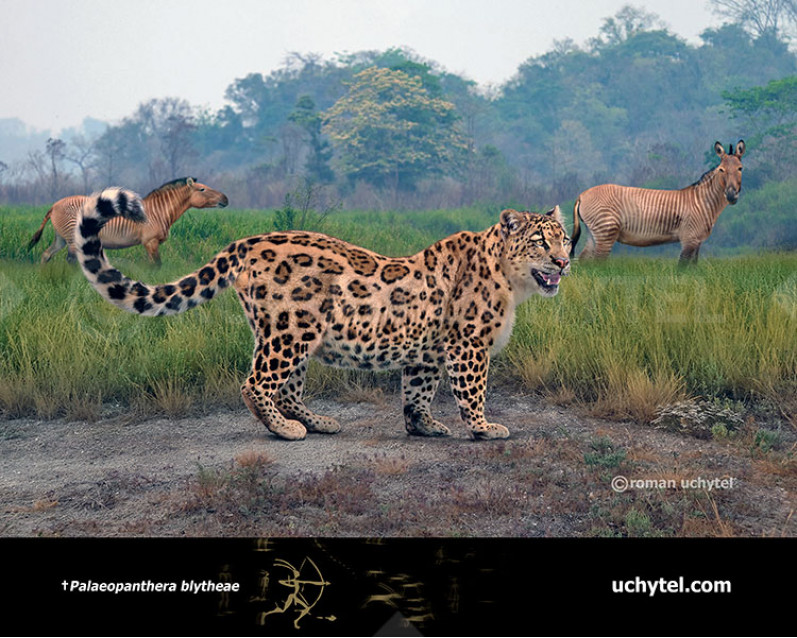
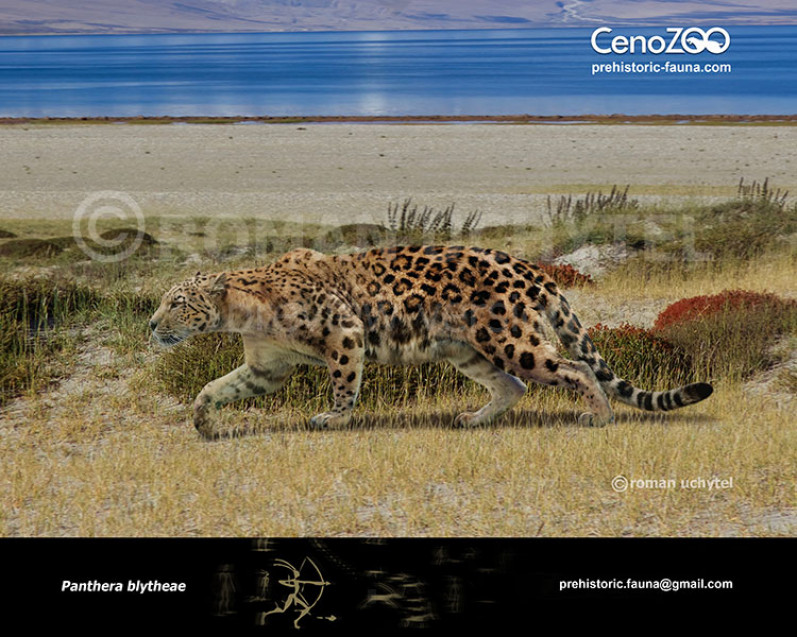
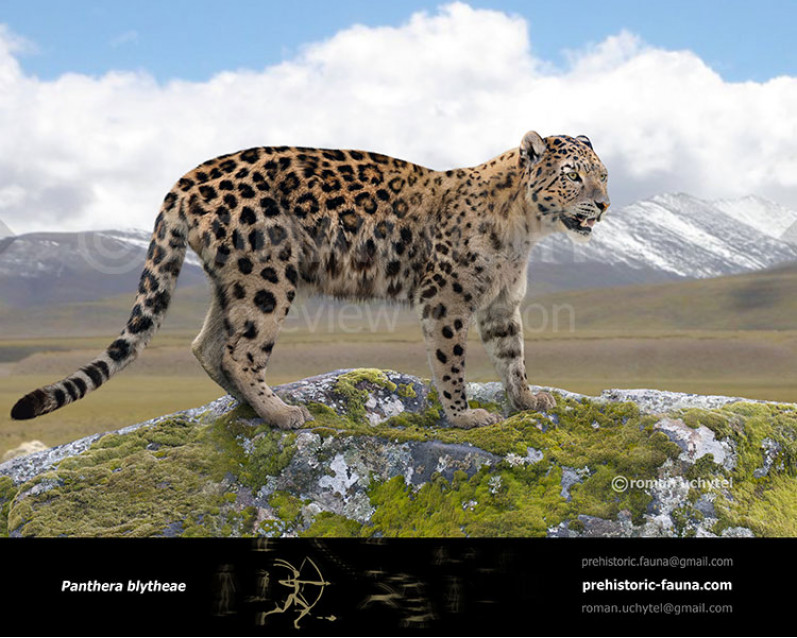
-797x638.jpg)
-797x638.jpg)



-70x56.jpg)
-70x56.jpg)
-346x277.jpg)
